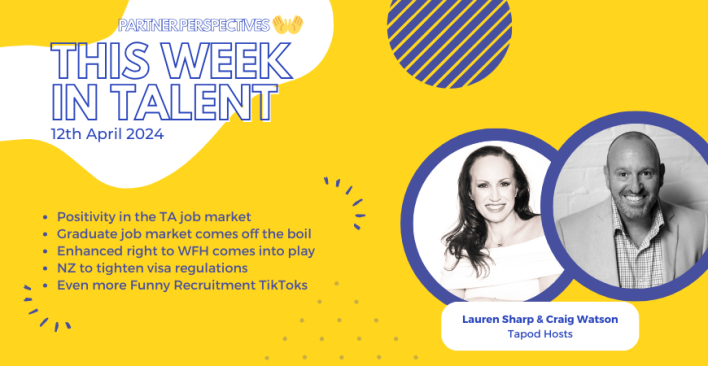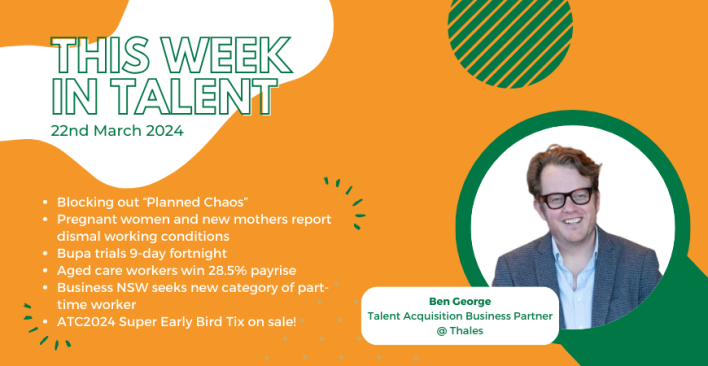7 Talent hunters discuss the TA metrics they use to measure success

Metrics in TA are used to measure performance and drive improvements. However, there are so many metrics out there and if we were to keep track of each one of them, we would have no time left to do actual recruiting!
So which ones should we be focusing on?
We ask some of your peers to find out what metrics are they using to keep their function ticking over successfully. What do you think? Use the comment section to share your thoughts!
 Sarah Purches
Sarah Purches
Talent Acquisition Consultant at RMIT Online
In terms of metrics, I find “time to hire” very transactional and with a short view focus. It’s something we look at, but not something we are measured against.
Aside from annual performance rating appraisals, within the first year we do a 6-month checking in with the employee and hiring manager to ensure expectations are being met and the employee is happy and feels supported. We also have regular checks throughout the year with to ensure people are tracking well and are engaged. This is how we measure our success.
Having a strong onboarding journey, adequate on the job training and a supportive, inclusive, collaborative, fun-loving work culture really supports this. We have had great success to date as well as have high engagement, which we are really proud of.
 Rebekah Di Blasi
Rebekah Di Blasi
Head of Talent & Culture at KJR Australia
Understanding whether your chosen candidate added value to your business in both the short and long term is a better measure of success.
So we take internal data such as performance and potential ratings (9-box) and align them with quality of hire metrics such as employee retention and engagement to try and understand the bigger picture.
Being aware of your best source channels is also essential for reaching the right candidates, as well as understanding how engaged they are with you as a potential employer.
We are able to leverage data from our Talent Community to understand source channels and analyse candidate engagement using statistics around message response rate, response time and platform activity.
Working closely with the Marketing team, we can gauge the impact of our employer brand and whether our candidate communication strategy is working to ensure the stars align with every vacancy.
 Richard Barnett
Richard Barnett
National Client Solutions Director at Hays Talent Solutions
“Manager and Worker Satisfaction” data including NPS is critical for measuring effectiveness and sustainability of RPO/MSP delivery. We regularly survey hiring managers and workers for their feedback, keeping track of the overall trends as well as investigating any outliers in responses, either positive or negative. We are then able to detect and address any weaknesses at an early stage in our service, or valued strengths to further build upon.
‘Time to Fill’ is also important as it is a strong indicator of the overall strength of our service and can act as a warning for issues in the hiring process. Any cost-saving initiatives a programme might have, should never be at the expense of Time to Fill.
James Witcombe
Recruitment Manager at SMAART Recruitment
From an agency perspective, we look at retention of new hire at three and six months.
If it is a high percentage, then we know we have been recruiting well. If it is low, we need to look into the reasons why new employees are leaving and change the profile we are recruiting.
TA teams with problematic turnover early on need to examine their “source of hire” and focus more on the hiring sources that provide longer tenures and least turnovers.
Chloe Field
Talent Acquisition Consultant
To get a full picture of how myself and my team are performing, I typically focus the following metrics related to our turnover/hard-to-fill roles:
- Source of hire – measuring and understanding the effectiveness of our sourcing channels (i.e. where Talent is coming from) and the conversion rate.
- Spend – how much we spend as a function, ROI from licenses and tools, look at our % of annual payroll against our budget.
- Speed – looking at our hiring velocity and what percentage is filled on time on or before a required date.
- Quality – we measure this via a simple survey at the 90-day mark once honeymoon period is over for both the HM and new hire. For HM, we ask “how perfect is this new person for your role?” and for the candidate “how perfect is this job for you?”. You can score 1-10 or use a net promoter score to measure their response.
These insights form the first steps in optimising our recruitment funnel, one metric at a time. As recruiters, we need to stop guessing and start measuring more!
 Jessi Carroll
Jessi Carroll
Head of Executive Talent Acquisition at Medibank
One of our business drivers is gender diversity so we provide key areas of the business with metrics around Gender Insights, which can assist our People Leaders in understanding the number of male/female applicants to shortlist ratio.
We look at this type of reporting in areas where we are seeing a gap in upcoming female leaders so that we know what we should be looking into and make the necessary adjustments to our hiring strategy.
We also like to focus on providing relevant market insights to help inform future hiring decisions, for e.g. if there is a high demand for a skill which is driving salaries up and candidate availability down.
 Stan Rolfe
Stan Rolfe
Principal at Qi Talent Solutions & Talent Board HR APAC Program Director
Marketing conversion rates — where are candidates coming from (web traffic), which ones are more engaged and hired through what channels? Should you be redirecting your LinkedIn marketing spend to other sources?
It’s important to regularly review your marketing data to make more informed decisions on where you should spend your dollar.
Offer conversion rates — it is important to know how that your recruiters are appropriately understanding candidate motivators and your better performing recruiters should have higher conversion rates in terms of offer acceptances vs offer declines.
There is no point investing so much time and effort into a candidate that when you get to an offer it is declined because you didn’t understand the individuals drivers or motivators.
ATC2019 is all about exploring high performance Talent functions and the elements necessary for Talent Acquisition (TA) to thrive as we enter the age of intelligence. Get your tickets here.

Related articles
Leave a Reply
Sign up to our newsletter
Get a weekly digest on the latest in Talent Acquisition.
Deliver this goodness to my inbox!




